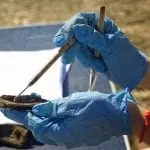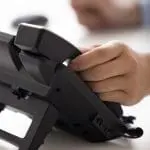The circulatory, or cardiovascular, system is a wonder of engineering. Somehow your muscles, tissues, and each cell need to be able to receive nutrients, expel wastes, and receive oxygen. Your body also needs to be able to transport proteins and hormones throughout. If foreign invaders get into your system, you need to be able to attack and get rid of them and this requires some sort of delivery system to get these fighter cells where they need to go. You also need to keep your body temperature constant and maintain proper pH levels.
Whew! Sounds like a big job!
Well, all of this, and more, is accomplished through five liters of blood being pumped throughout your body all day, every day, without you giving it a conscious thought. Blood is made up of four parts. Making up 45% of your blood volume are red blood cells to transport oxygen and get rid of carbon dioxide. Your bone marrow makes 2 million of these cells per second! These cells are uniquely shaped to be able to fold to fit into even the smallest capillary.
The second piece of the puzzle would be our white blood cells. These cells fight infections and help keep you healthy.
Next are the platelets. These cell fragments only last about a week and are responsible for clotting your blood and forming scabs. That’s a spectacular feature in and of itself!
The liquid portion of your blood is the plasma, which is made of about 90% water and makes up about 55% of your blood volume. It transports a variety of substances around the body.
Of course, the blood requires a pump to get it where it needs to go. And that pump is a fist-sized muscular organ located in your chest — your heart. This organ works non-stop, speeding up as necessary to keep up with your level of activity.
The heart is connected to the major blood vessels. These vessels are part of two primary circulatory loops throughout the body. The pulmonary loop brings deoxygenated blood to the right side of the heart where it’s pumped to the lungs so it can dump carbon dioxide and get fresh oxygen. It then travels to the left side of the heart where the systemic circulatory loop takes over. These vessels take oxygenated blood to every cell and tissue in the body.
If you took all the blood vessels in an adult and laid them end to end you’d have a line 100,000 miles long—that would stretch around the circumference of the Earth four times! The smallest of these blood vessels is many times thinner than a human hair. Each blood vessel is specially lined to keep blood flowing and to prevent potentially deadly clots. In capillaries (the smallest blood vessels), this layer doubles as a filter, keeping the blood in but allowing liquids, dissolved gases, and other substances to get where they need to go.
The circulatory system is incredibly complex and bears all the hallmarks of being specially designed by our Creator. It’s not the result of chance, random processes over millions of years. It’s the result of our intelligent Creator who made us fearfully and wonderfully in his image. We should remember the wisdom of the psalmist, who rightly acknowledged:
God is the strength of my heart, and my portion for ever.
I’m David Rives…Truly the heavens declare the glory of God.
LIKE David’s FB page here: http://www.facebook.com/DavidRivesMinistries
FOLLOW us on Twitter: http://twitter.com/TheDavidRives
VISIT our official website for tons of free information: http://www.davidrivesministries.org
David Rives MUSIC: http://www.davidrivesmusic.com
For the TBN show “Creation in the 21st Century”: http://www.creationinthe21stcentury.com





